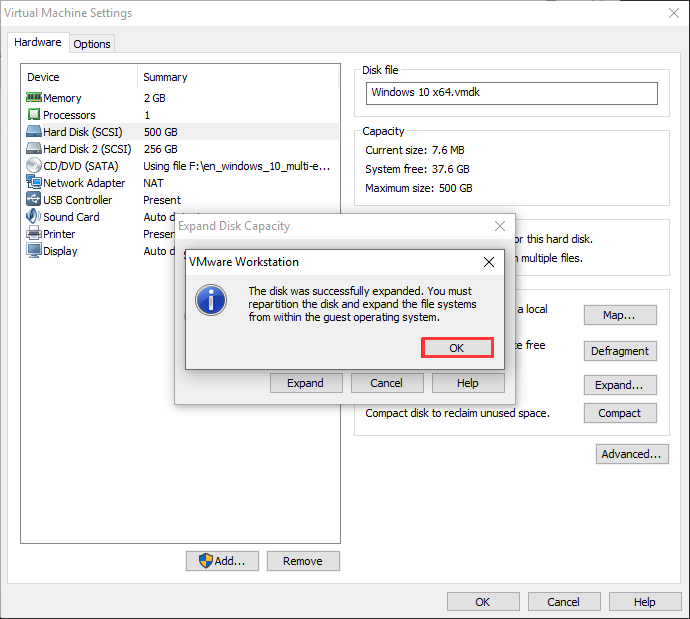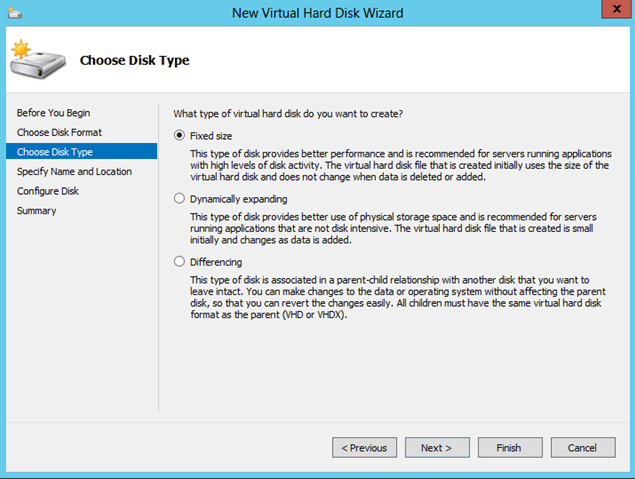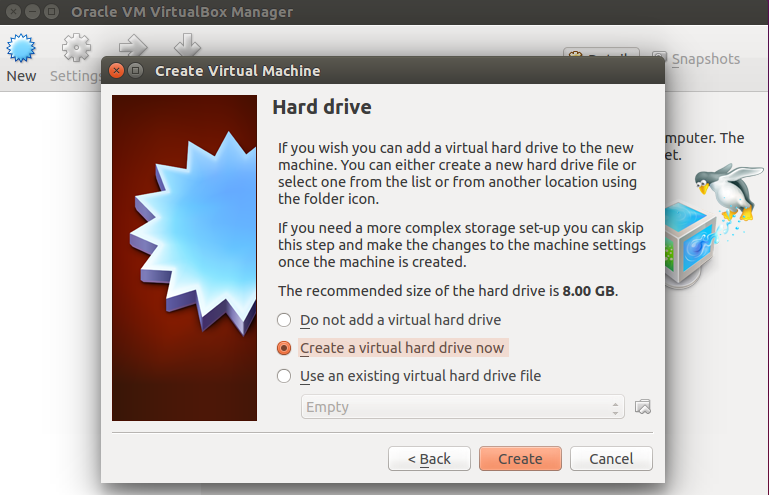
- Creating a virtual machine with more disk space how to#
- Creating a virtual machine with more disk space install#
- Creating a virtual machine with more disk space drivers#
- Creating a virtual machine with more disk space Pc#
- Creating a virtual machine with more disk space windows 7#
If you’re using an older CPU with only one or two cores, it may be time to upgrade-your virtual machine will run much faster if you can give it at least two cores (if not more). If you have a computer with a multi-core CPU, you can assign more cores to your virtual machine from its settings window. A virtual machine with two or four cores will be much more responsive than a virtual machine with one, just as a computer with more cores is. Your computer’s CPU does all the work of running the virtual machine and its software, so the more CPU it can use, the better it will run.

Consider upgrading your RAM-8GB should be a decent amount for most basic VMs. If that doesn’t help, you may not have enough RAM in your computer to run virtual machines at a comfortable speed. Try to give it at least 1/3rd of your computer’s available RAM, though you can do more if you want. You can allocate more RAM in your virtual machine’s settings dialog (the virtual machine must be powered off to do this). If you’re running memory-hungry applications in the virtual machine, you may want to allocate more than 2 GB of RAM so Windows isn’t constantly swapping to disk.
Creating a virtual machine with more disk space windows 7#
Microsoft recommends at least 2 GB of RAM for 64-bit Windows 7 systems, and this recommendation also applies to Windows 7 when it’s running in a virtual machine. Each virtual machine contains an entire operating system, so you’re splitting your computer’s RAM between two separate systems.

Creating a virtual machine with more disk space how to#
Here’s how to enable Intel VT-x or AMD-V if it’s disabled-enable it in the BIOS, then head to your virtual machine program’s settings and make sure it’s enabled there too. You may have to go into your computer’s BIOS and enable this setting yourself, even if your computer supports it.ĪMD-V is generally enabled automatically if it works on your hardware, but many Intel computers ship with Intel VT-x disabled.

However, some computers don’t automatically enable them. Newer Intel and AMD processors generally include these features. Intel VT-x and AMD-V are special processor extensions that improve virtualization. RELATED: How to Enable Intel VT-x in Your Computer's BIOS or UEFI Firmware Once it’s on the list, your antivirus will ignore all files in this directory. To speed things up, you can add your virtual machine directory to your antivirus’s exclusions list. The antivirus can’t see inside the virtual machine to detect viruses running on your guest operating systems, so this scanning isn’t helpful. Your computer’s antivirus program may be scanning your virtual machine files whenever they’re accessed, reducing performance.
Creating a virtual machine with more disk space Pc#
RELATED: Antivirus Slowing Your PC Down? Maybe You Should Use Exclusions Exclude Virtual Machine Directories In Your Antivirus
Creating a virtual machine with more disk space install#
If you see a notification that an update is available for Guest Additions or VMware Tools, you should install it. If you’re using a Windows guest operating system, it’ll be just like installing any other Windows application.Įnsure you keep these updated with your virtual machine program.

In Parallels, click Actions > Install Parallels Tools.įollow the instructions on your screen to complete the installation. On VMware, select the Install VMware Tools option in the virtual machine’s menu instead. You can then launch the installer from the virtual disc drive in your virtual machine. In VirtualBox, boot your guest operating system and click Devices > Insert Guest Additions CD Image.
Creating a virtual machine with more disk space drivers#
These packages include special drivers that help your guest operating system run faster on your virtual machine’s hardware. Install Your Virtual Machine Software’s ToolsĪfter installing a guest operating system inside a virtual machine, the first thing you should do is install your virtual machine software’s drive package-Guest Additions for VirtualBox, VMware Tools for VMware, or Parallels Tools for Parallels. The space will be assigned in a large block instead of being added in smaller pieces. You also won’t see as much file fragmentation. There’s a trade-off here: a fixed-size disk uses more space on your hard disk, but adding new files to the virtual machine’s hard disk is faster. When you create a fixed-size disk, all 30 GB of that space would be allocated immediately. However, it’s slower than creating a fixed-size disk (also known as a preallocated disk). This can be convenient, as each virtual machine won’t take up an unnecessarily large amount of space on your hard drive.


 0 kommentar(er)
0 kommentar(er)
